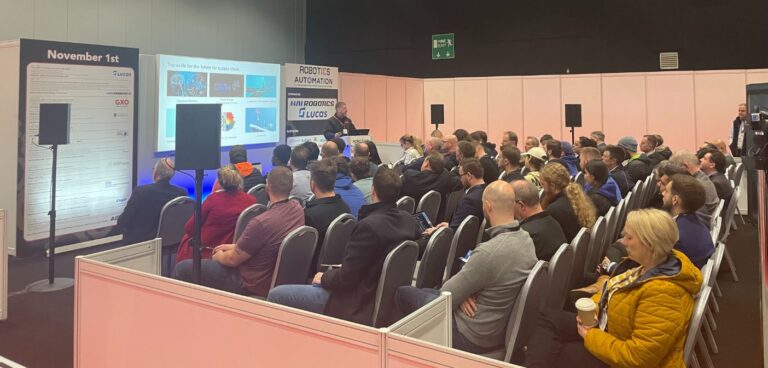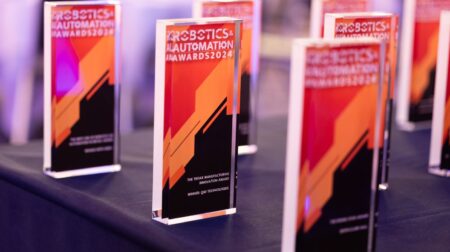The first day of the Robotics and Automation Conference saw 10 industry experts from across the robotics value chain deliver exclusive presentations that educated, informed and enlightened a packed-out theatre of industry professionals eager to learn how cutting-edge, real-world technology deployments can transform their own business operations.
The opening session saw James Hart, business development manager at Lucas Systems, dispel five common myths of autonomous mobile robot (AMR) implementations and outline how AI tools can optimise and orchestrate people and robots to support distribution centre objectives. He also explored the capabilities of AMRs and warehouse management software.
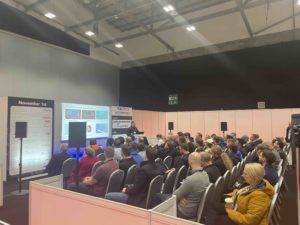
This was followed by a presentation from Damien Skinner, country manager for the UK and Ireland at HAI Robotics, on how warehouse automation can help the UK fashion industry’s £4.4bn returns conundrum. During the session, Skinner outlined how e-commerce has “picked up tremendously” over the past few years and how data shows a large part of the conversion from bricks-and-mortar stores to online stores is here to stay.
“The same is true for the fashion industry, which is now dealing with an ever more prominent challenge linked to this trend: product returns,” explained Skinner, before describing how autonomous case-handling robots can improve the accuracy and efficiency of the returns process, enabling warehouses to cut down on costs whilst future proofing their operations.
Chris Dolby, senior learning and development director at GXO Logistics, then delivered a session on how to develop skills for the supply chain of the future, with insight into how to successfully cultivate a learning culture, maximise current and future support and the practical tools, programmes and systems needed to enhance skills development.
These market-specific sessions then gave way to two presentations from the world of academia. First, Dr Gabriella Pizzuto, researcher at the University of Liverpool, explored the role of robotics for accelerating material discovery. During her session, Pizzuto explained how ‘robotic scientistis’ carry out experiments at the university’s Autonomous Chemistry Lab, and helped the audience to better understand how AI and machine learning can help address open challenges in lab automation.
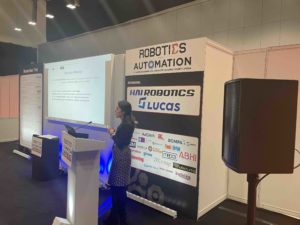
Esyin Chew, director of the EUREKA Robotics Centre at Cardiff Metropolitan University, followed this with a presentation on the concept of Robotics-as-a-Service for the healthcare and hospitality sectors. Chew provided insight into the centre’s research and innovation highlights, as well as an overview of case studies that offered a spectrum of service robots in the real world.
Following a short break, the first session of the afternoon saw Professor Rob Buckingham OBE, director of RACE at the UK Atomic Energy Authority, discuss the importance of robotics in achieving fusion energy.
According to Buckingham, robotics is key for the entire lifecycle of future fusion plants, including design, maintenance and end-of-life. “Fusion energy, based on the same processes that power the sun and stars, has great potential to deliver safe, sustainable and low carbon energy for generations to come. But there can be no fusion with no robots,” said Buckingham.
His presentation included case studies from the record-breaking fusion energy machine JET (Joint European Torus) and an overview of how RACE is developing technologies for sustainable fusion energy by learning and collaborating with decommissioning, space and mobility sectors.
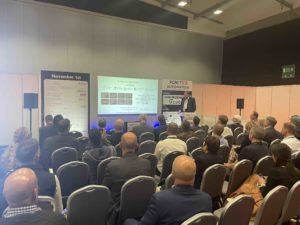
The purpose and impact of the National Robotarium – a new UK government-backed asset based in Scotland, was the focus of the next session. The facility’s CEO, Stewart Miller, shared details on how the National Robortiaum has been specially designed to assist industry in overcoming the barriers to adopting robotics and AI technologies.
After that, Martin Gossling, head of commercial innovation at University Hospital Southampton Foundation Trust, spoke on how automation is enhancing patient care in the NHS. He did so by talking about the use of autonomous robots as part of the Covid-19 vaccination trials. This included the set up of saliva testing labs in Hampshire and the Isle of Wight to support automated testing of saliva samples in 2020.
The penultimate session of the day came from Nigel Orton, senior director for engineering, automation and technical systems at CHEP, who explained how automation and robotics can play a part in the circular economy.
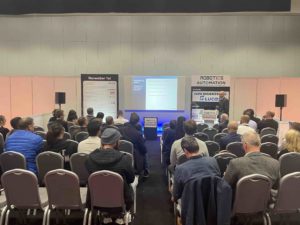
He first explained what a circular economy is and the benefits that a re-use and recycle model can bring to both business and environment, before outlining the role that inspection and reports of goods and assets has in the circular economy, as well as the challenges faced when trying to automate these processes.
The final session of the first day of the Robotics and Automation Conference 2022 saw Marco Chacin, head of actuator development and end effectors for automation, robotics and assembly technology at Airbus, discuss the present and future for high-performance robotics in the aerospace industry.
According to Chacin, major players in robotics and automation have planned, invested, installed and implemented numerous solutions to meet increasing market demand for their products. “When compared to the automotive industry, aircraft assembly presents specific challenges for automation systems, including design, re-quantification, large manual content, access and tight tolerances,” said Chacin.
“Challenges remain for automated aircraft assembly, including product variation and different material combinations that require more research, testing and qualification.”

